In April Dave Rudkin, Jon Ratcliffe, Lee Roberts and I left North Wales for a climbing trip to Taghia; a small village in the Atlas mountains of Morocco. The crux of the trip came early with 4AM monster queues at Manchester airport testing team resolve. We might all have perished if it wasn’t for Lees 4 pack of IPA and Jons renditions of Mick Johnston: great climbing partners have your back off the crag too.
I was optimistic that my first flight in a few years would help rekindle my reading habit but I just indulged in Lawrences “Fragments that I Love” mix instead (I did eventually start reading again and after 4 months even finished the 600 page tomb that is ‘The Bone Clocks’, a book I’ll be recommending to anyone who’s making too efficient use of their time and could ponder immortality and the disintegration of Earth instead). Back to Morocco.
We land in Marrakesh on a melter of an afternoon. Hot breeze to the face. Shades on, mild regret at wearing cords. Conversation with our taxi driver is pretty subdued as we weave through the traffic swarms out of the city. In part because we don’t speak each other’s language but also because it’s Ramadan, a time of peaceful contemplation, tiredness, hunger etc. We’re all a bit under slept and happy to doze so manage to match his vibe pretty well. Stopping at the retail park for crag snacks, a rich burp goes off like a warning shot and Jon’s much celebrated 12hrs-hours-of-IPA comes to a definitive end in a dark supermarket toilet: “Stomach bug”. Fully stocked on cashews and figs we head North East, leaving the souks and spices of Marrakesh for wider skies and the mountains.
The outskirts of Marrakesh make for classic westerner-visits-hot-place holiday – I mean, climbing trip – window viewing. Tall garden walls draped in purple bougainvillea flowers enclose substantial houses with ochre walls and elegant symmetry. On the other side of the road children shuffle to school, someone gets a backie and on the ground floor of a 3 story flat, a man attends a grocery shop.
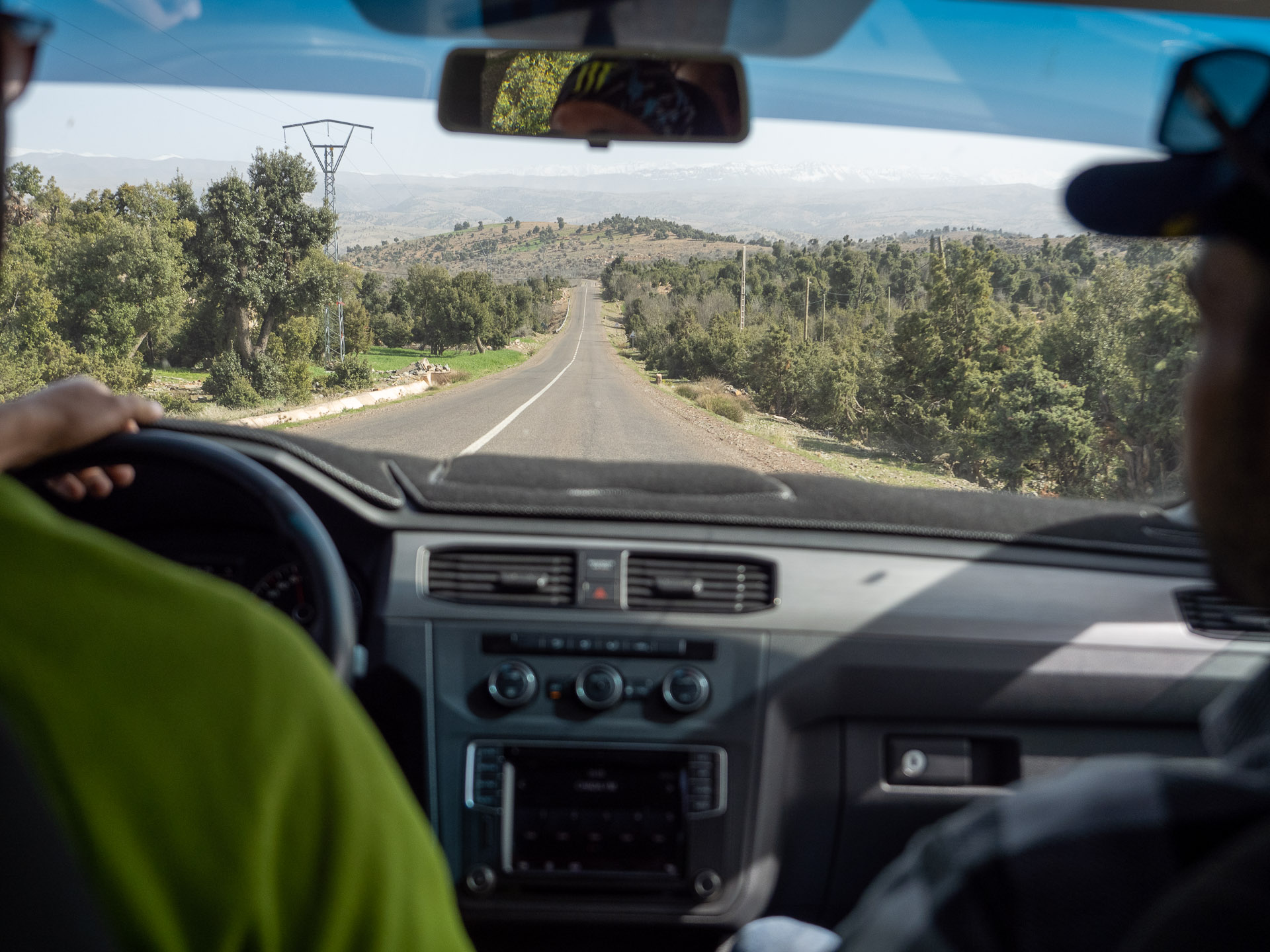
The more rural towns share the vibrance but not the affluence. A busy high street distracts the gaze from the clusters of seemingly unoccupied, half-built high-rises behind. It’s hard to tell if the iron rods sprouting from the concrete are 5 or 50 years old, the aridity preserving metalwork longer than were used to. It’s later evident the flats are relics of a nationwide housing project, stunted before completion. It’s a reminder of the challenges that pervade day to day life for people in Morocco . We swap drivers, pick up our host Mohamed and carry on. My thoughts drift to the other side of the window and I wonder what impression we give, all tinted windows, headphones and duffle bags.
Drifting further from civilisation the landscape evolves from desert scrub to upland steppe. Cool air flushes sweaty shirts. Our drivers sedate pace compliments the window gazing and the smooth switchbacks give a rotating panorama of the neatly terraced uplands and jagged mountain skyline which, as it appears over the brow of the hill, seems to swell up in the evening light. Slipping in and out of wakefulness the journey has the feeling of a long slide.
The 13th century town of Zaouiat Ahansal feels ‘bedded in’. It’s tumbling, tree lined river separates gravel streets and tall slit-windowed houses adorned with nice decorative spires. “Not special buildings, no. Just houses” replies Mohamed. At the grocery market a group of women have gathered by the wall. Their dresses are radiant, bright and seem sort of at odds with the dust and busyness of the street. At the roads end we uncurl our legs into the soft light of afternoon.
The local kids seem happy. They smile and ask “Dirham?”. We don’t oblige but smile back. Jon kicks a ball around with them. Mohamed straps our duffle bags to the donkey and we begin the final leg on foot, up the track by the river and through a narrowing gorge. It’s a simple walk and we take the chance to talk with Mohamed, learning a little about the place, the people and the mountains. Through breaks in the vegetation we catch the elongating lines of light and shadow brush the highest peaks. Then the rooftops emerge, the river widens and we hear the dusk lament of the village donkeys, the call to prayer and the chatter of birds.
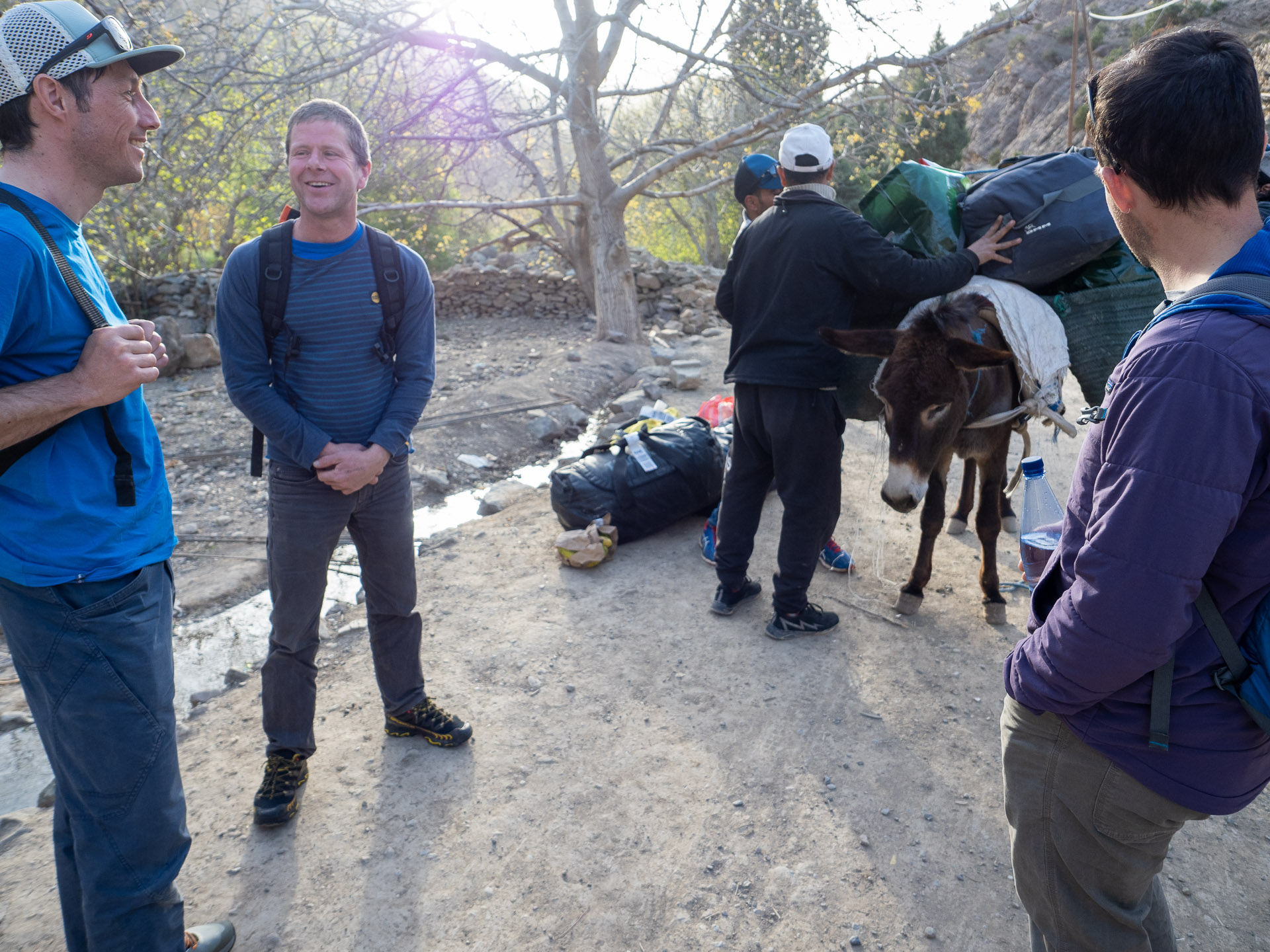
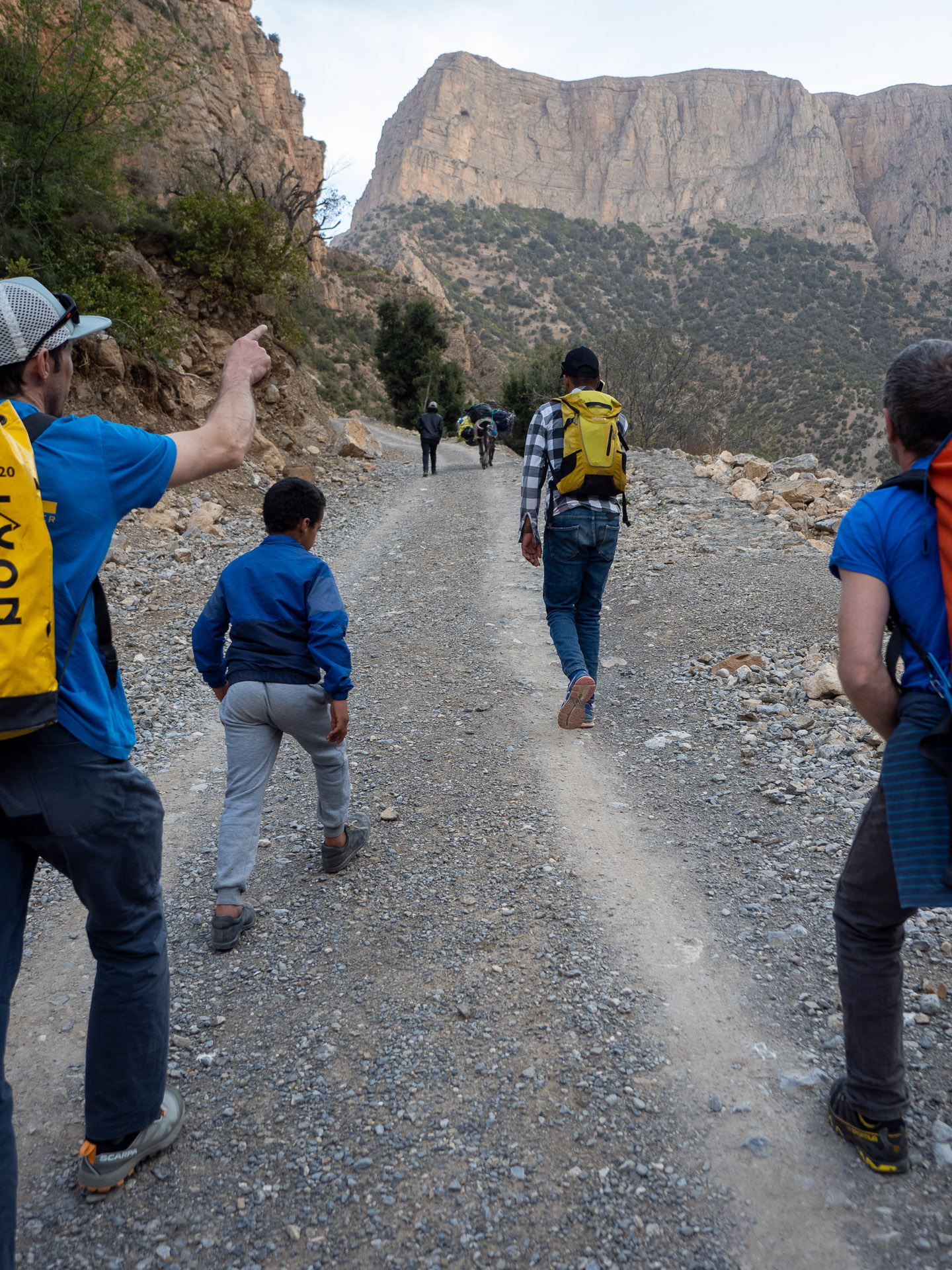
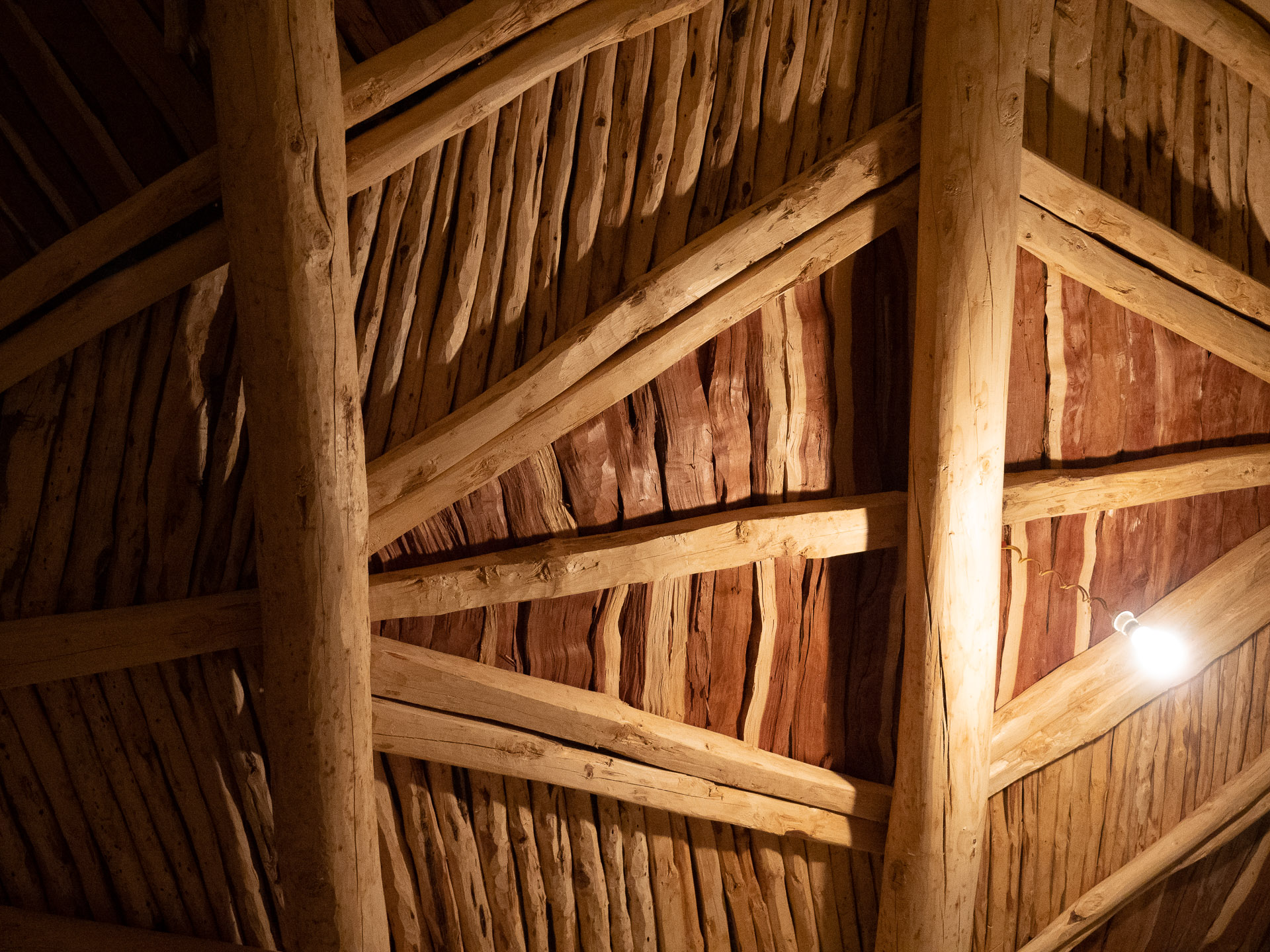
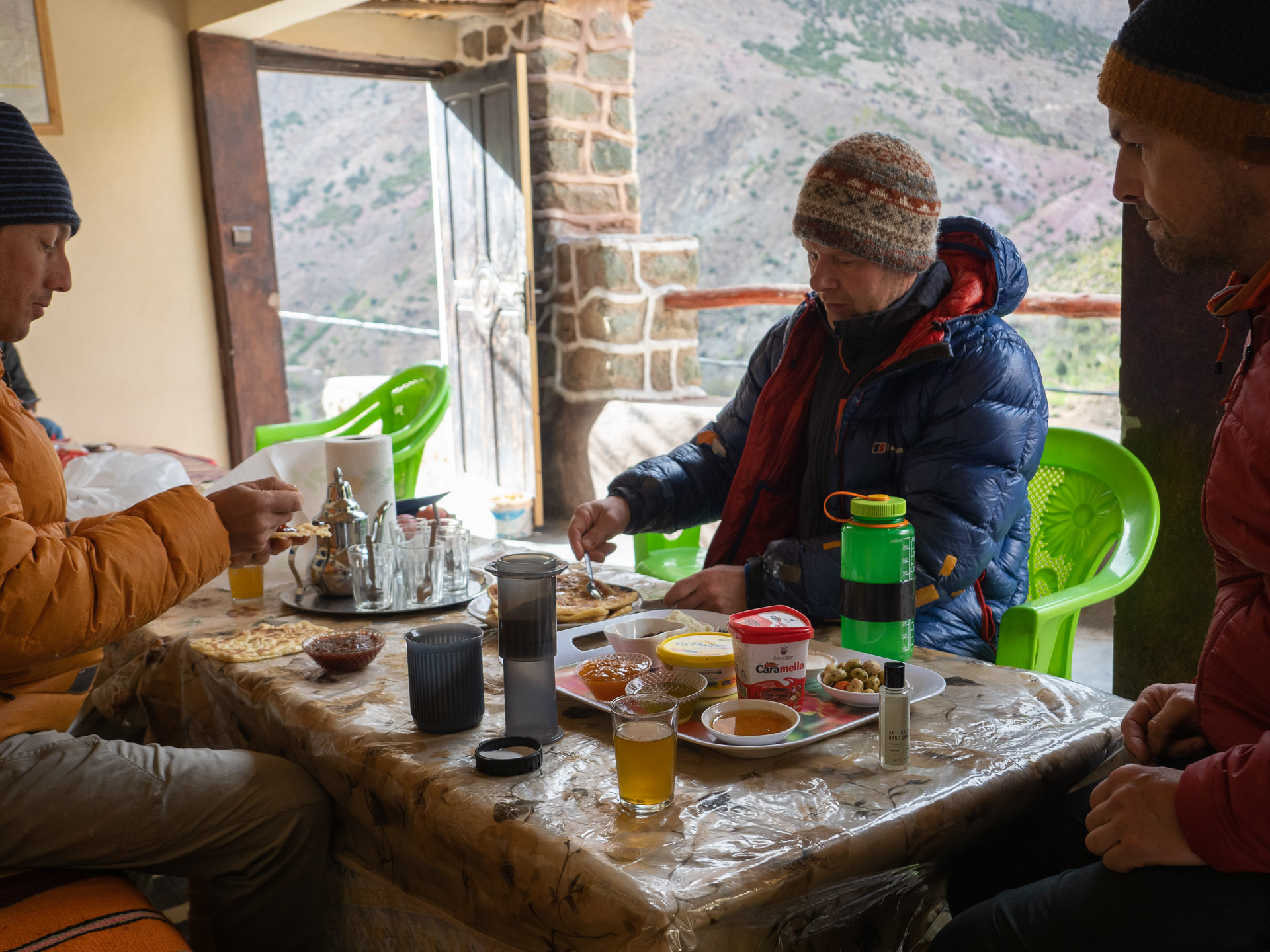
Our first morning dawns cool and bright. From the balcony of the refuge the village we view the cirque of ochre peaks. The village, cupped within, appears as something of an oasis. The houses nestle on dry stone walls above the arterial river, which were told flows perennially from an aquifer in the rock. The villagers have manipulated the supply to feed the terraced fields and their homes; including a leat, expertly crafted, winding it’s way down from the spring. On the riverbank people tend pastures, sort aggregate and wash clothes. We hear the croak of frogs, watch the poplar trees sway and the bees busy around the orchard.
Taghia is home to a community of around 600 Berber people who, with a little support from neighbouring towns, lead lives of relative self sufficiency and intimacy with the landscape. Theres a school, various community events take place and everyone seems to be going about with purpose, even during this quiet month. Mohamed tells us that everyone in the village has a bed and food. We hear precious few engines during out stay.
The mountain summits are intersected by yawning dark gorges, the walls of which are the main attraction to climbers. At their tallest, they span the full 800m from riverbed at 1900m to open plateau at 3000m. The mountains are dry, save for the odd snow patch, but spanish juniper, evergreen oak and various cacti thrive in the parched soils. We’re told nomadic shepherds navigate the high ground, travelling with their flocks in a way of life Mohamed describes as “very hard”. We get the impression that improving access to food and transport mean the nomadic way is dying out.
The Berber people explored the landscape well before the inception of ‘conventional climbing’. Their paths carve devious routes across the mountain sides, giant dry stone walls support zig-sagging trade routes marked by cairns and the infamous ‘Berber walkways’ cunningly link shelves across sheer cliffs. Although not all of the village residents climb in a western conventional sense, mountain craft is very much engrained in their lifestyles. The village people are intimately familiar with the areas topography, it’s resources and weathers. Mohamed, as well as being a brilliant host to visiting climbers, is a climber too and his knowledge of the terrain and experience on the rock is of great value to us, both as a sounding board for climbs, approaches and descents but also as a shared dimension of interest, common ground we naturally relate through. His key phrase becomes a sort of a trip slogan –a“Whassssup guys? It’s time, to climb!”.
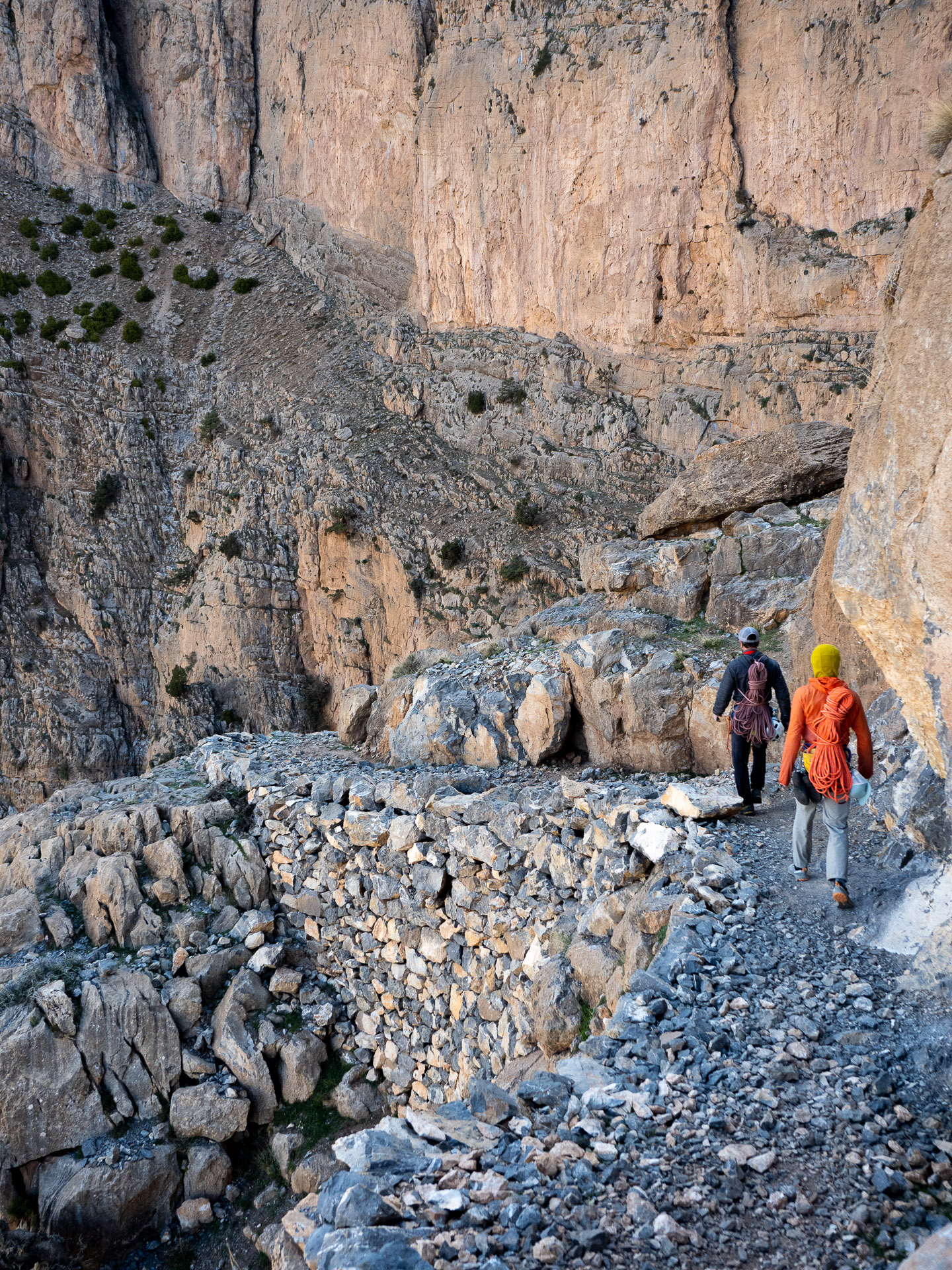
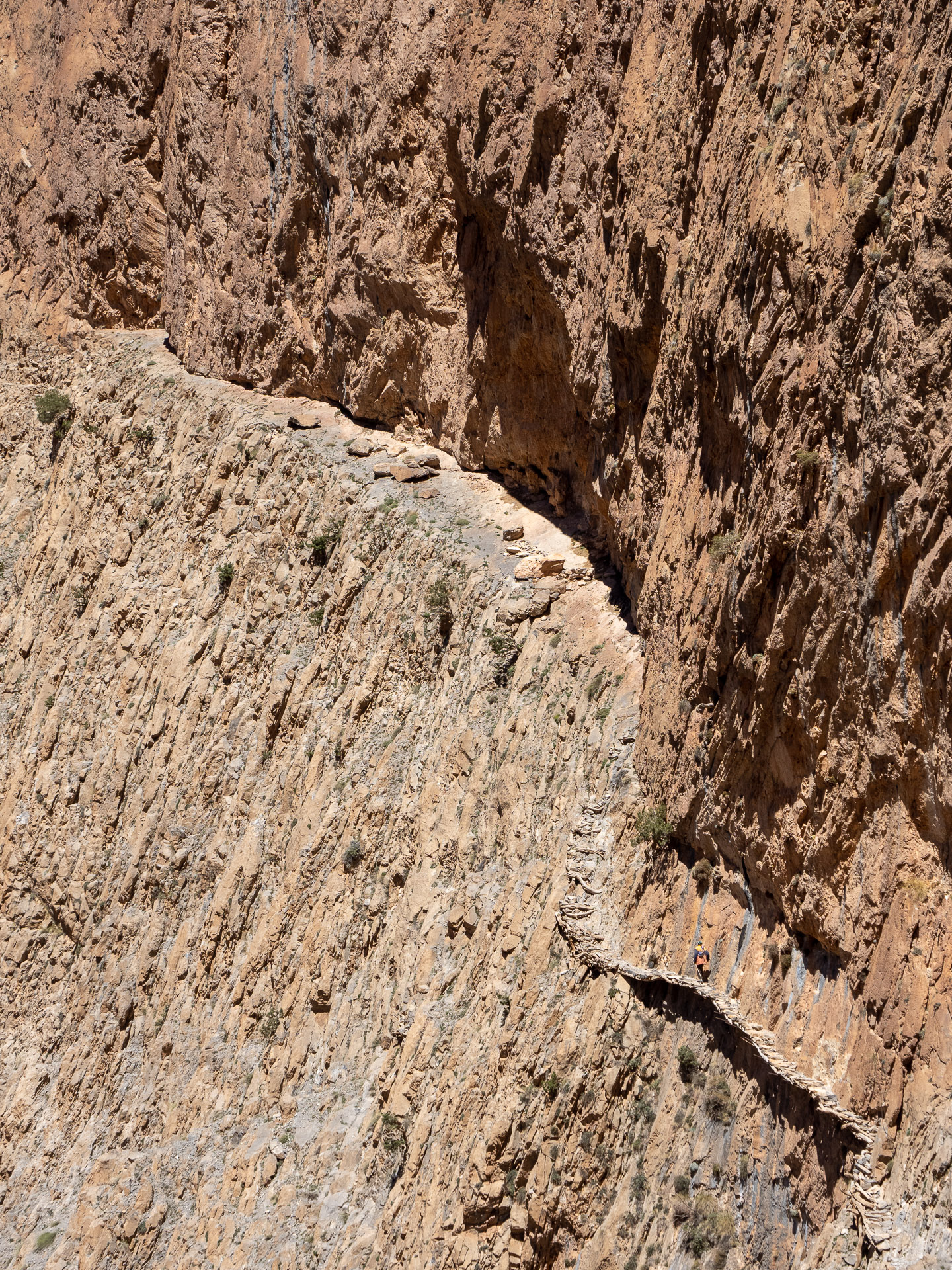
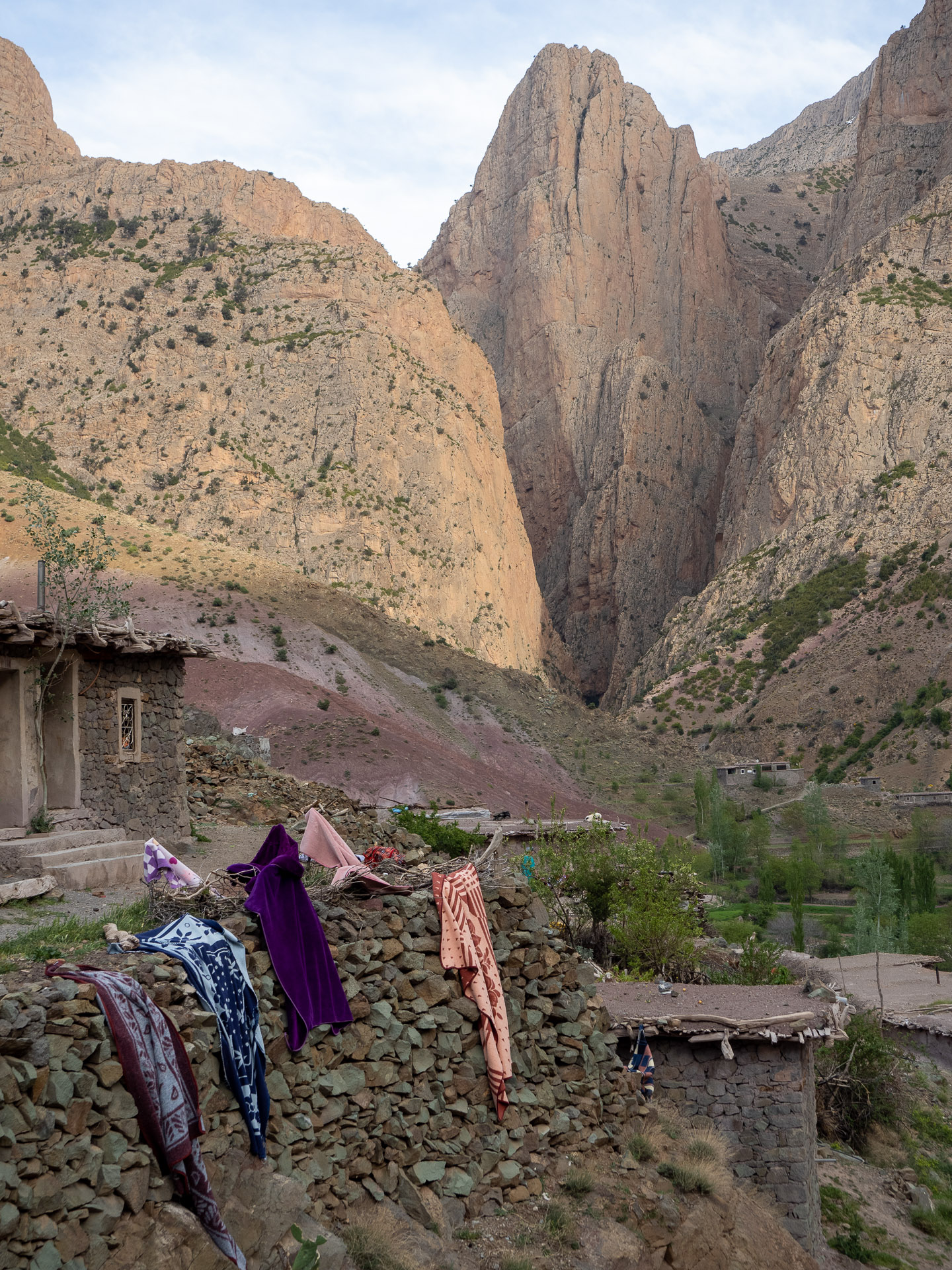
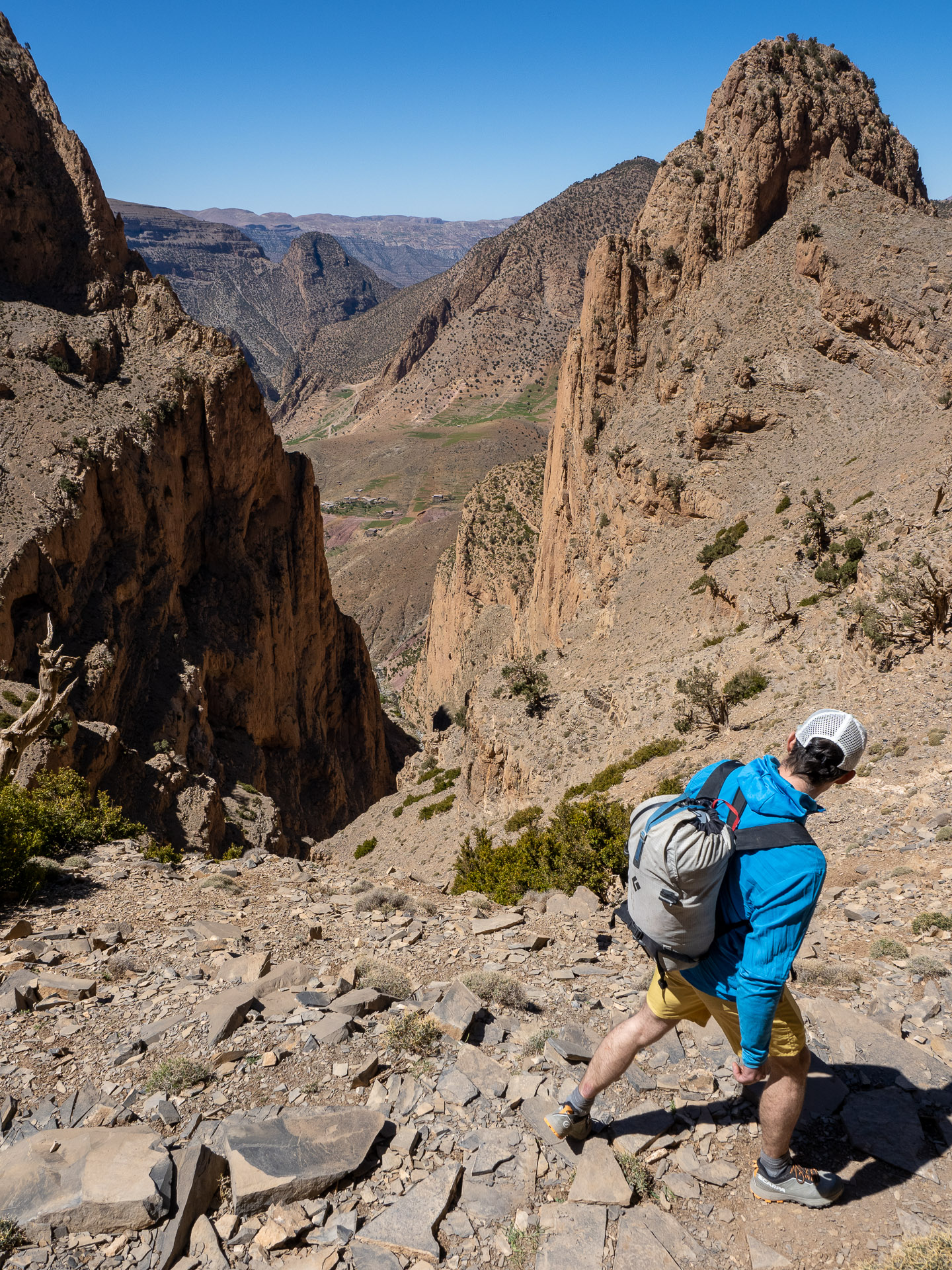
–
Western climbers, predominantly French and Spanish, began climbing here in the mid 70’s but it wasn’t until 2008 that ‘Taghia et autres Montagnes Berbères’, the first guidebook to the area, was published by Christian Ravier. These days Taghia sees a steady stream of visitors from all over the world. There are a mix of fully bolted and almost-not-at-all-bolted routes, some are half day warm ups just 15 minutes walk from the village and others fit the big wall bracket and are typically attempted from a remote camp, perhaps including a bivvy.
It takes a few routes for us to get into the swing of things but quickly the walls of Taghia become the canvas for experiences perhaps more immersive than we’d anticipated. We opt to climb ‘day routes’ described as being fully bolted and are pleased to find the descriptions accurate. Nevertheless we carry a few cams and half set of wires which come in handy, especially on easier sections of climbing.
The vert and just off vert forever-walls provide relentlessly technical, fierce climbing on crozzles, rough pinches, pockets and ears. The continuity impresses us – pitches in the mid 6’s feeling as sustained, technical and unlikely as those in the mid 7’s. It’s something of a relief to realise we’ll have a great time wherever we set out sights grade wise and so the focus of the trip swings naturally toward maximising volume of quality routes with as little rest as we can get away with. Taking care to select our level of challenge each day and giving some time to warm in to the rock, we manage to have success on (and top out of) every route we attempt.
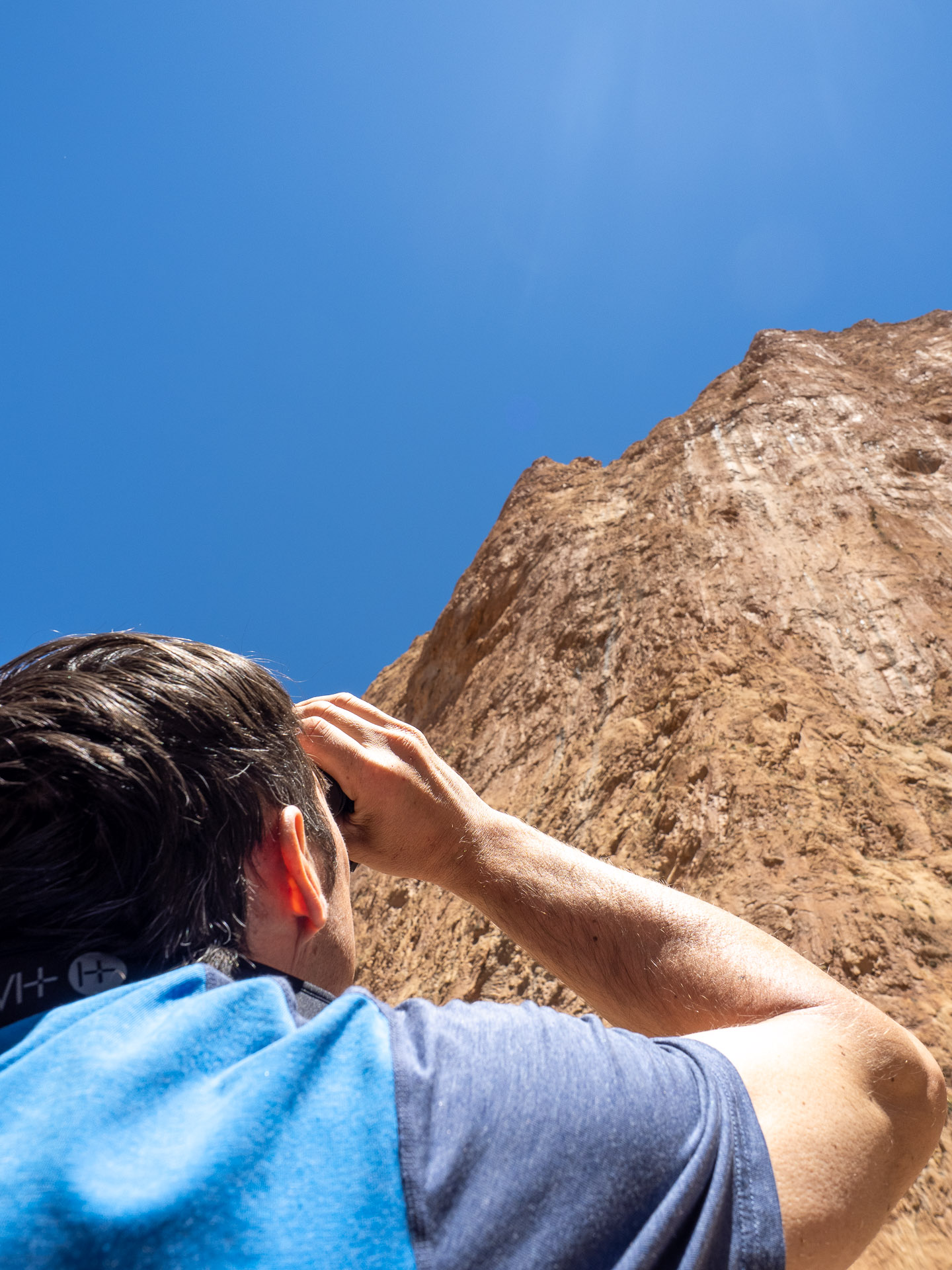
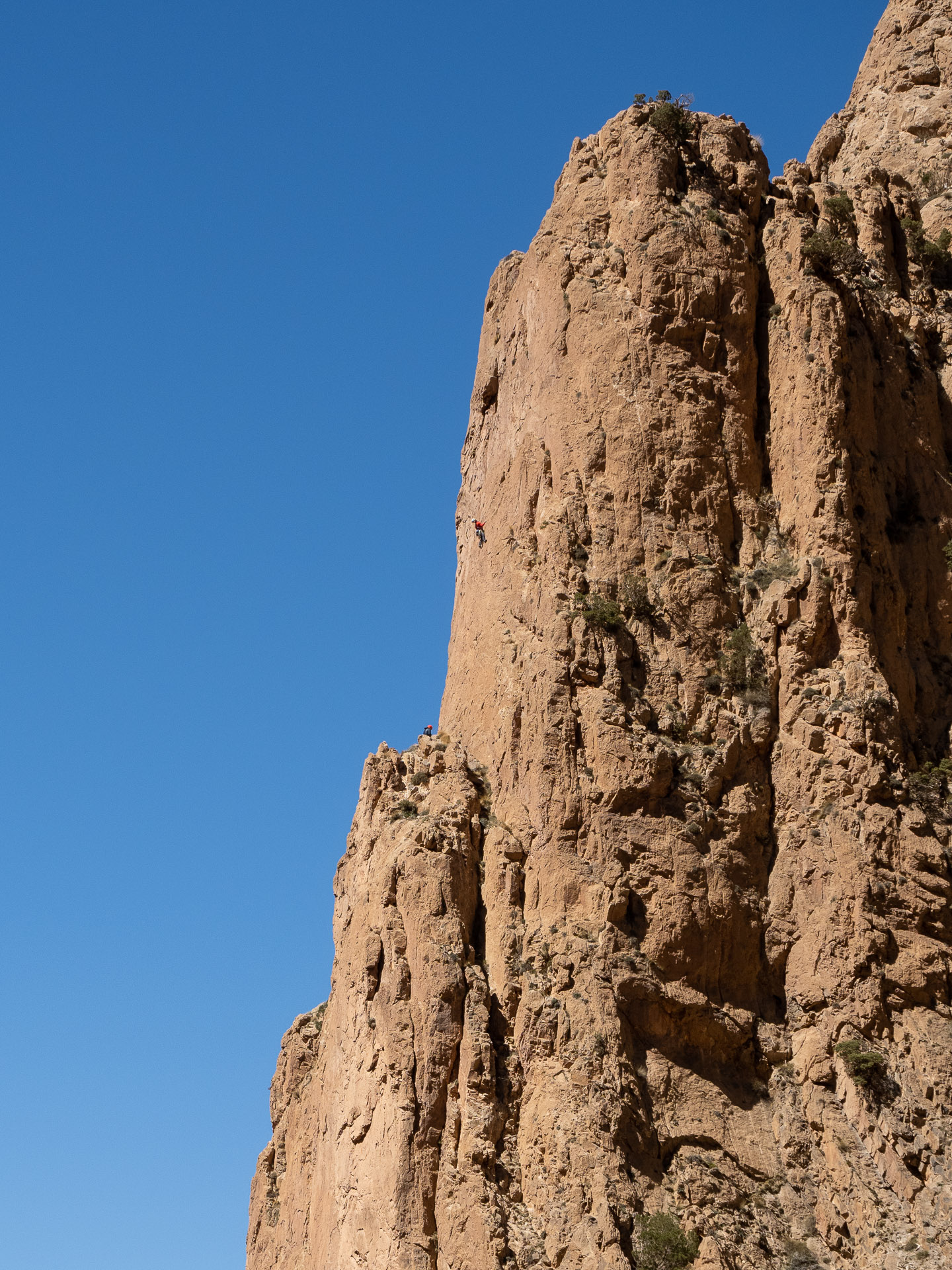
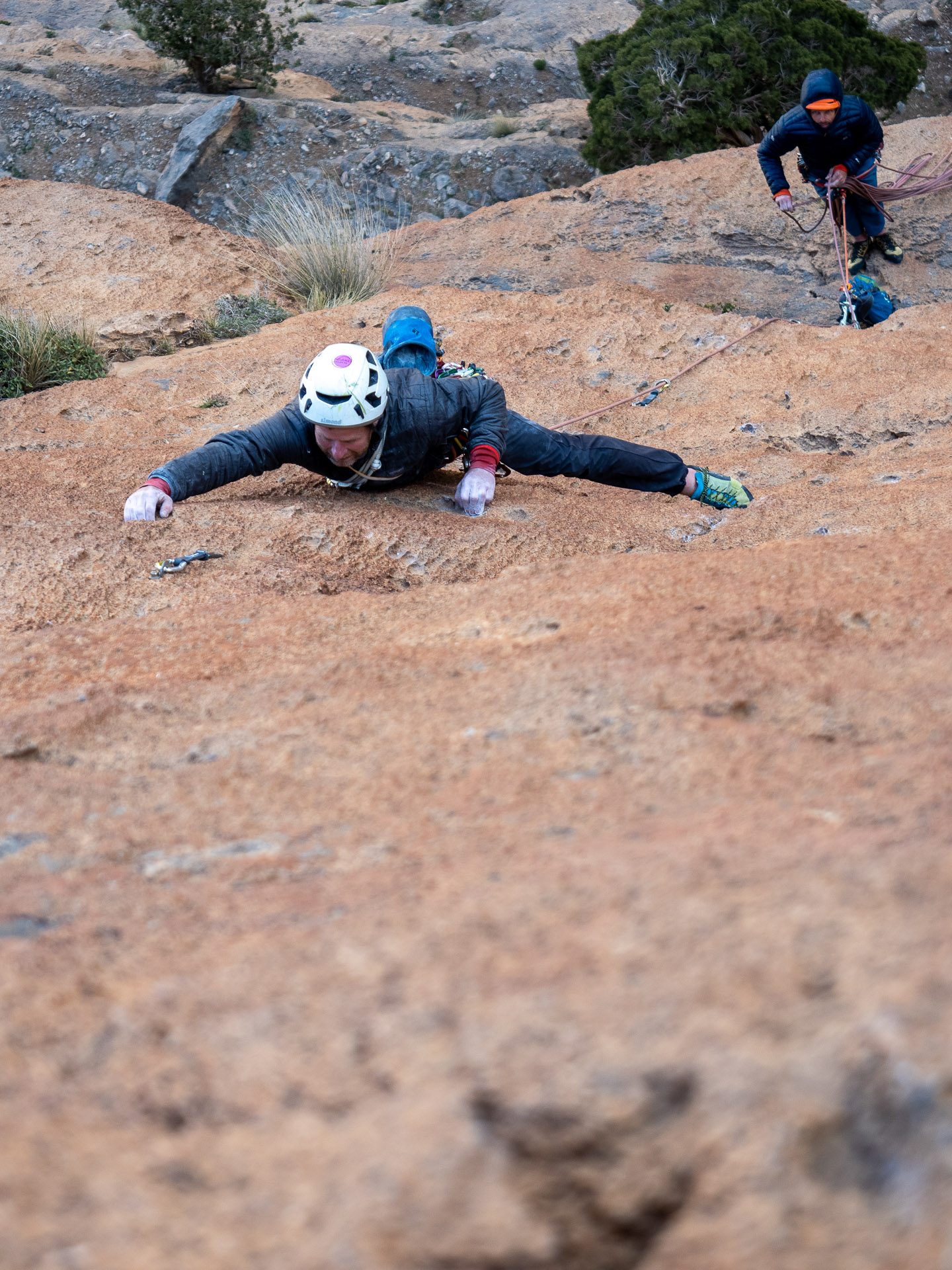
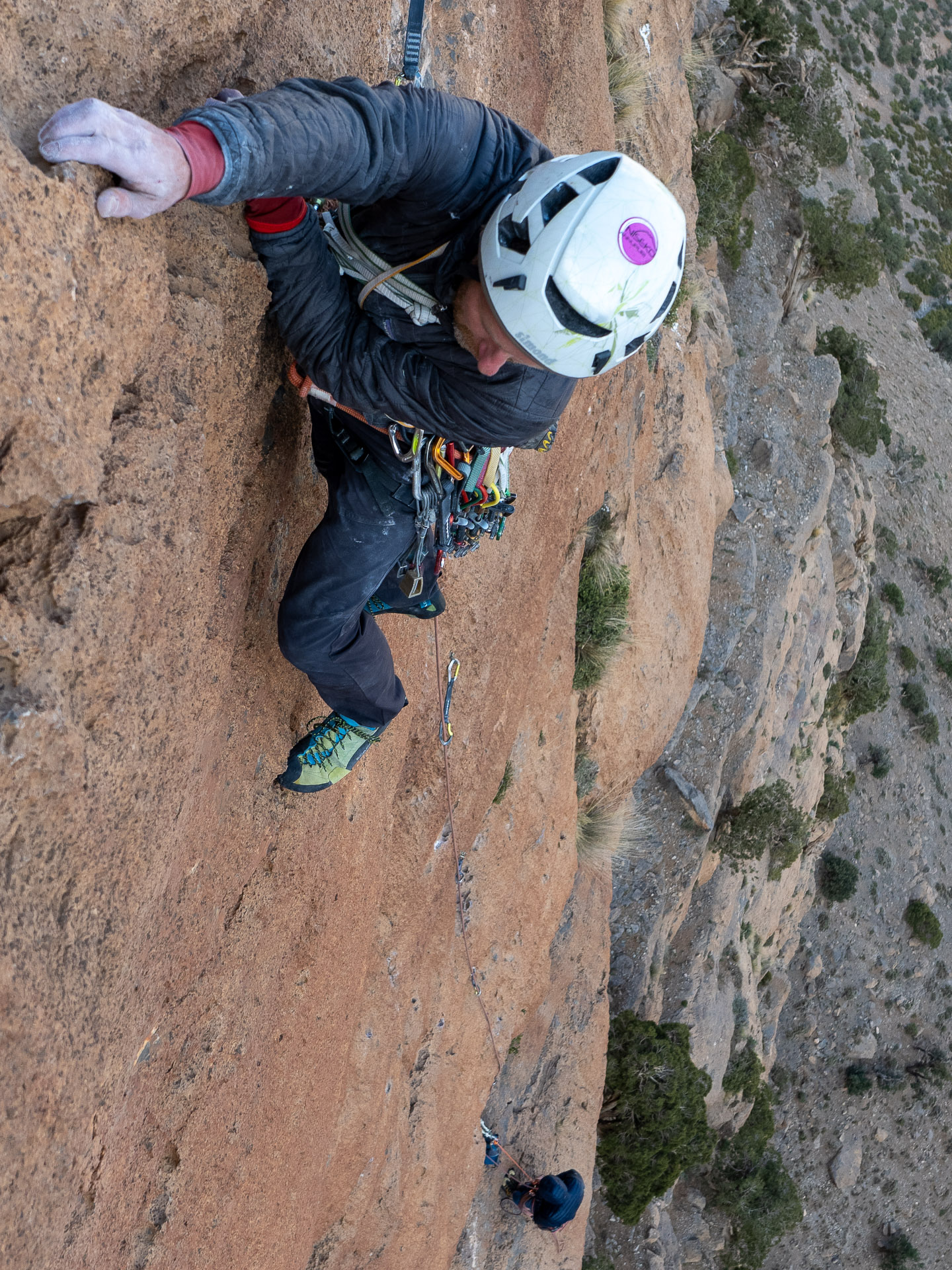
By way of comparison to UK style tech-wall climbs, doing the odd pitch on North Wales limestone or slate can feel like a kick up the arse for your technical faculties and mental fortitude. But not having to do another 10 pitches means theres no real need to max out on efficient climbing movement, unless the climb is near your limit. Sharing aspects of limit redpointing, long wall climbs become something of a mirror to motivation and focus, where consistent composure on sub-maximal terrain is a requisite of reaching the top ‘free’. To climb well and to enjoy each move, despite creeping fatigue, dehydration and doubt is a great challenge and Taghia feels like it could be the ultimate venue.
In our experience of limestone, we find the rock composition in Taghia unique. It’s iron hard, well bonded and loose holds are scarce. The typical calcite precipitation features of tufas and runnels are virtually absent, perhaps relating to the lack of rainfall. It’s a challenging medium to onsight climb on, often lacking major features to aim for and instead relying on interesting sequential movements, use of small hand holds and a lot of smearing on rough bobbles and scoops.
Reaching the upper ledge systems and summits we encounter giant juniper trees, roots tapping forcibly into bare rock, multi stemmed trunks supporting a tangle of crooked limbs. We sit around and enjoy the panorama of mountain terrain and pondering the unlikeliness of the trees positions. Perhaps 500 years old, the thick bark tells a story of drought, whilst others, split in two are burnt to cinders telling stories of storms and lightning. The old worldy-ness is a blend of mythology and reality; I imagine burning bushes and miraculous shelters in the desert. Perhaps it’s just the quietness of the air or the slower gear we’ve dropped into but the place has a feeling of permanence.
Logistically we keep it simple and every route we climb is within 90 minutes walk of our base. We try to climb in the shade and summit peaks with scrambling and walking descents. Since most of the climbs can be descended without recourse to abseiling back down them we climb mostly on a single 70m rope, using a tag line to haul a bag on some longer routes. Getting off the summits takes a little mountain craft, ferreting around and the odd abseil, which after the focus of the climbs is a really enjoyable aspect of the day. We take it all in at a leisurely pace. In primary school I think it was called Golden Time.
Theres no snow or ice to negotiate and we don’t experience any poor weather. Aside from a little rock I knock off hitting Dave in the shoulder, the climbing goes without a hitch. As with all trips, managing energy levels and understanding the strengths, weaknesses and inevitable ups and downs of your partners performance are part of the challenge. Between us all we make a good job of looking after one other, although we all indulge in a little sunburn.
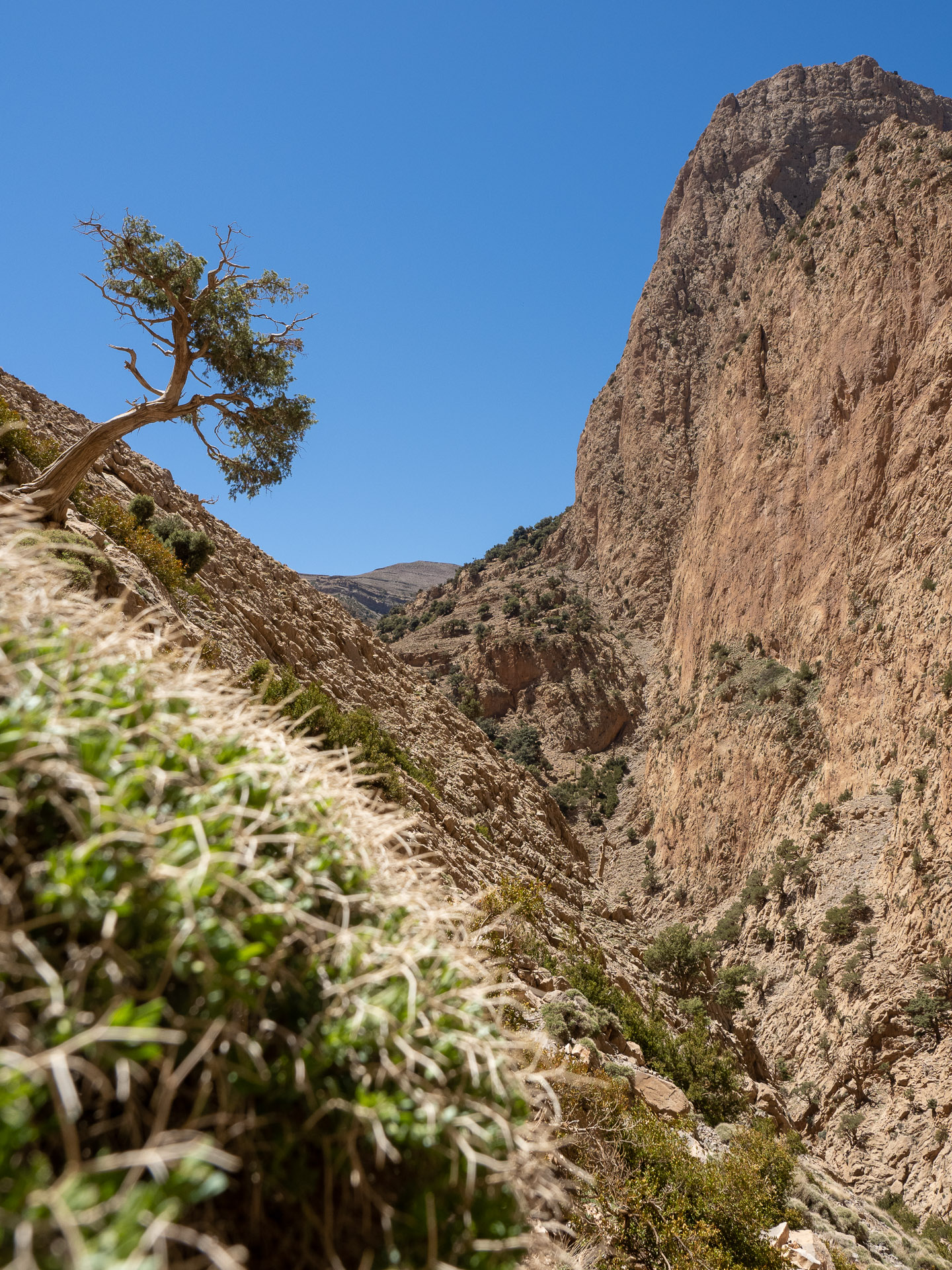
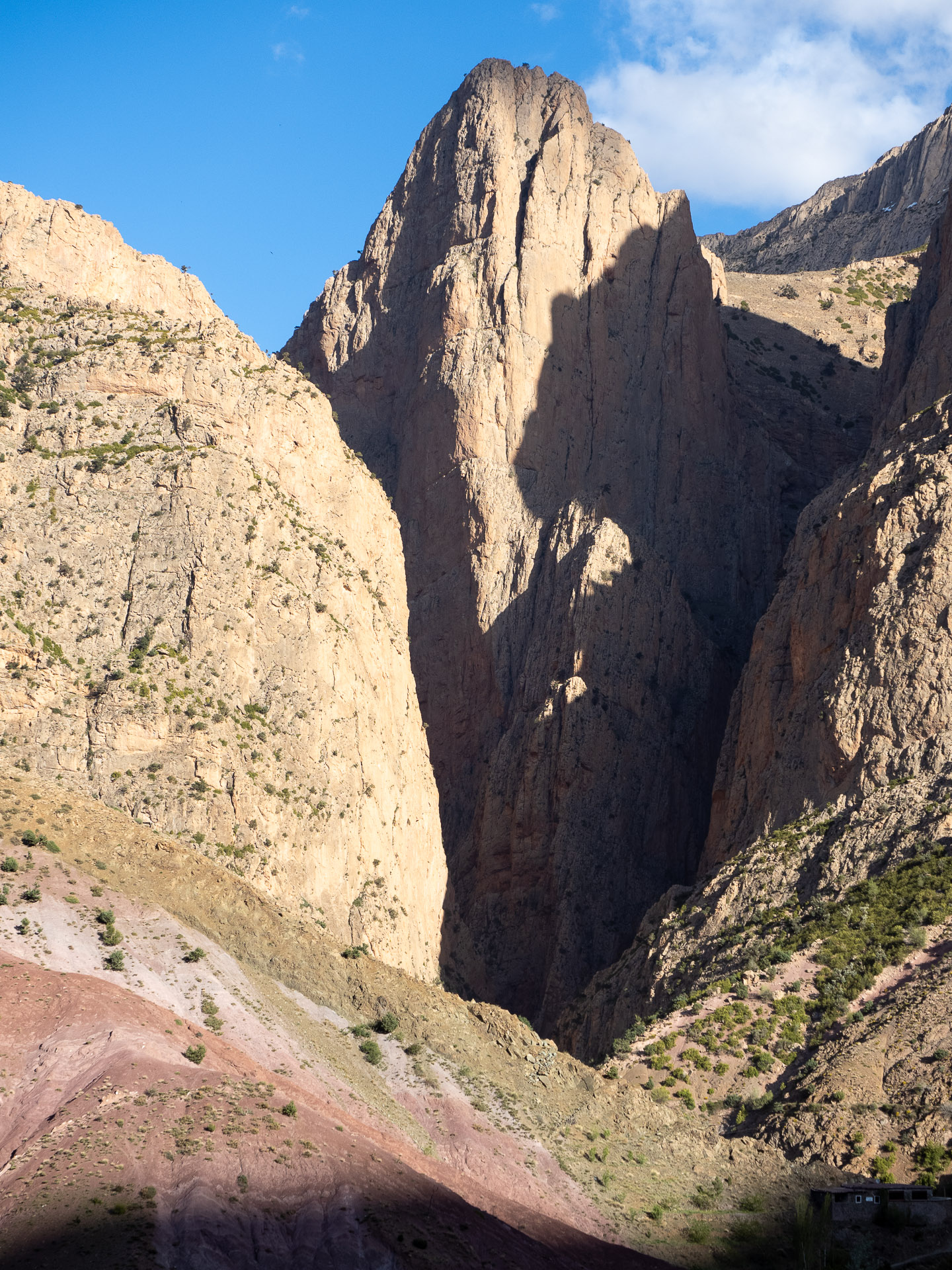
The climbing experiences blend naturally with the pace of life back at the gite. We follow the falcons through the binoculars as they rip down the gorge walls, sip our mint tea on the long sofas and have some craic with Mohameds father, a man who Dave describes as having walked straight off the streets of Manchester. “Que taaaal?! Mange?!” he roars, grinning manically. His 6 ft frame fills the door frame and he’s got this wicked moustache to match his leather jacket and swagger. It get’s funnier with each passing day until eventually were all in on the mania and everyones laughing before a words even left his mouth.
One of my favourite memories of the trip is of seeing Jon and Lee wander back in after a brilliant day out; heads high, shoulders down and just radiating contentment. Over another cup of mint tea we recall the glow of nervous tension, the satisfaction of a handhold and a perfectly weighted smear, of putting on trainers, the nourishment of washing swollen hands in the cold spring and of walking back along the dusty purple path where the flecks of metal ore are glinting in the afternoon sun.
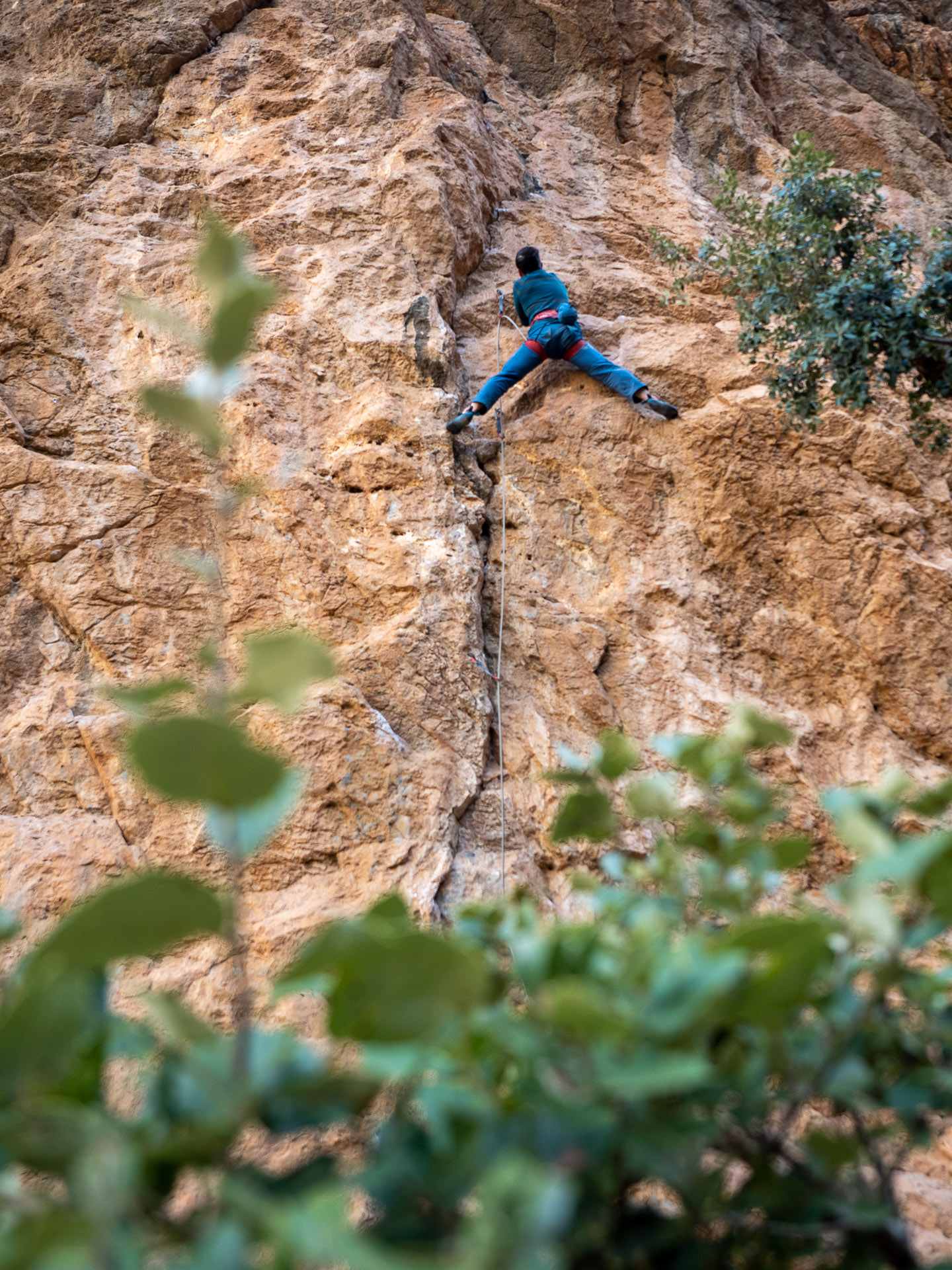
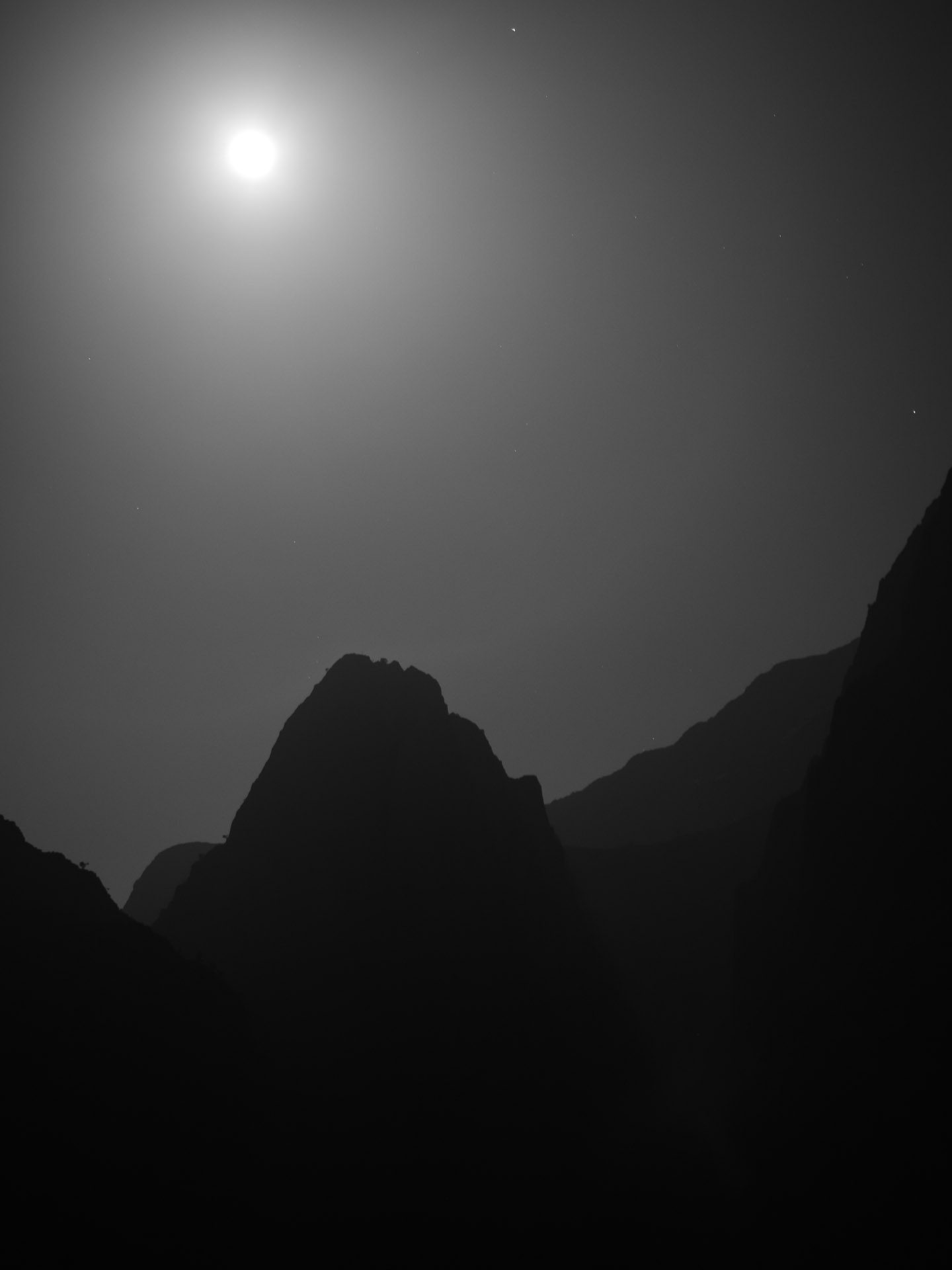
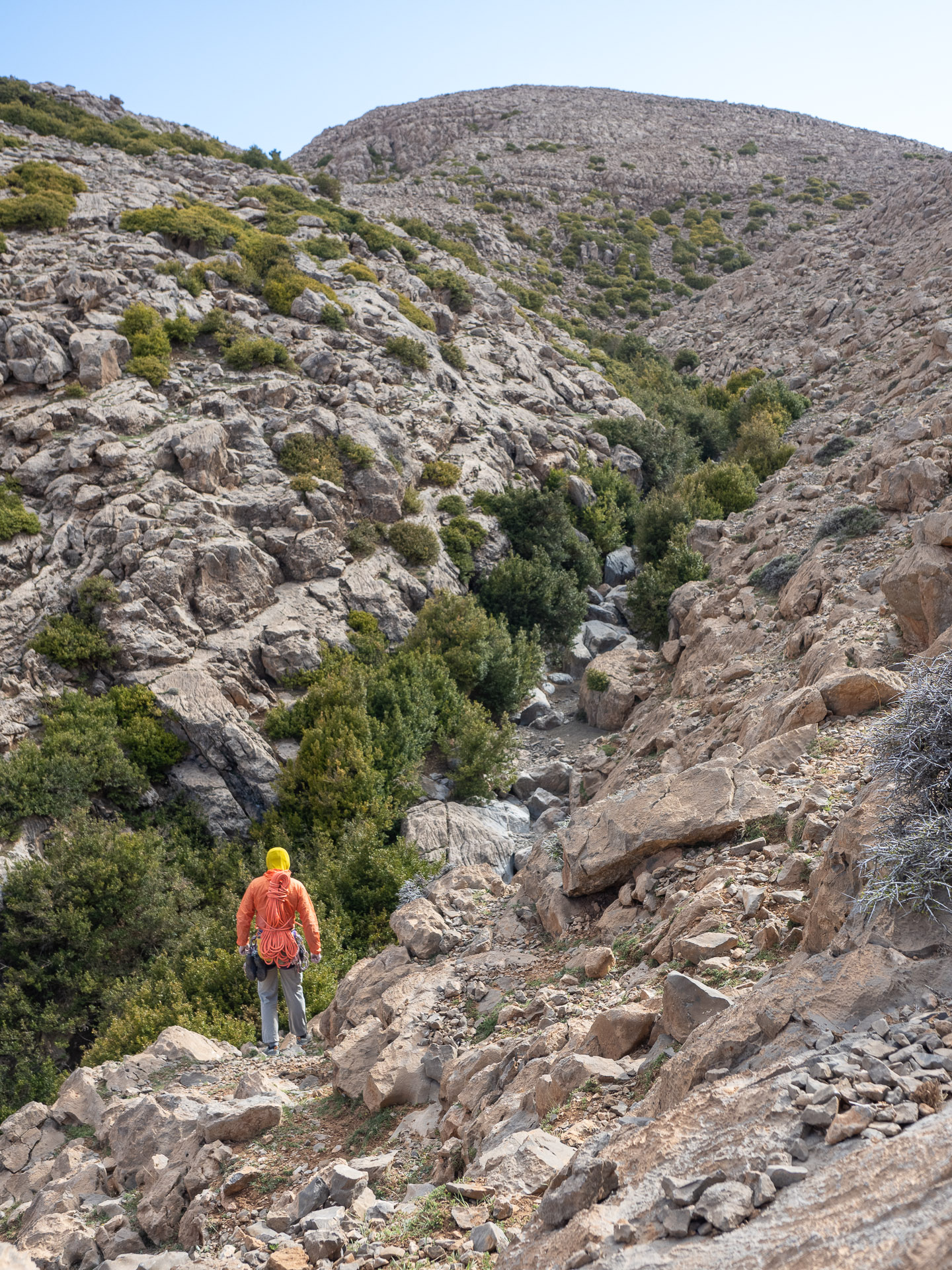
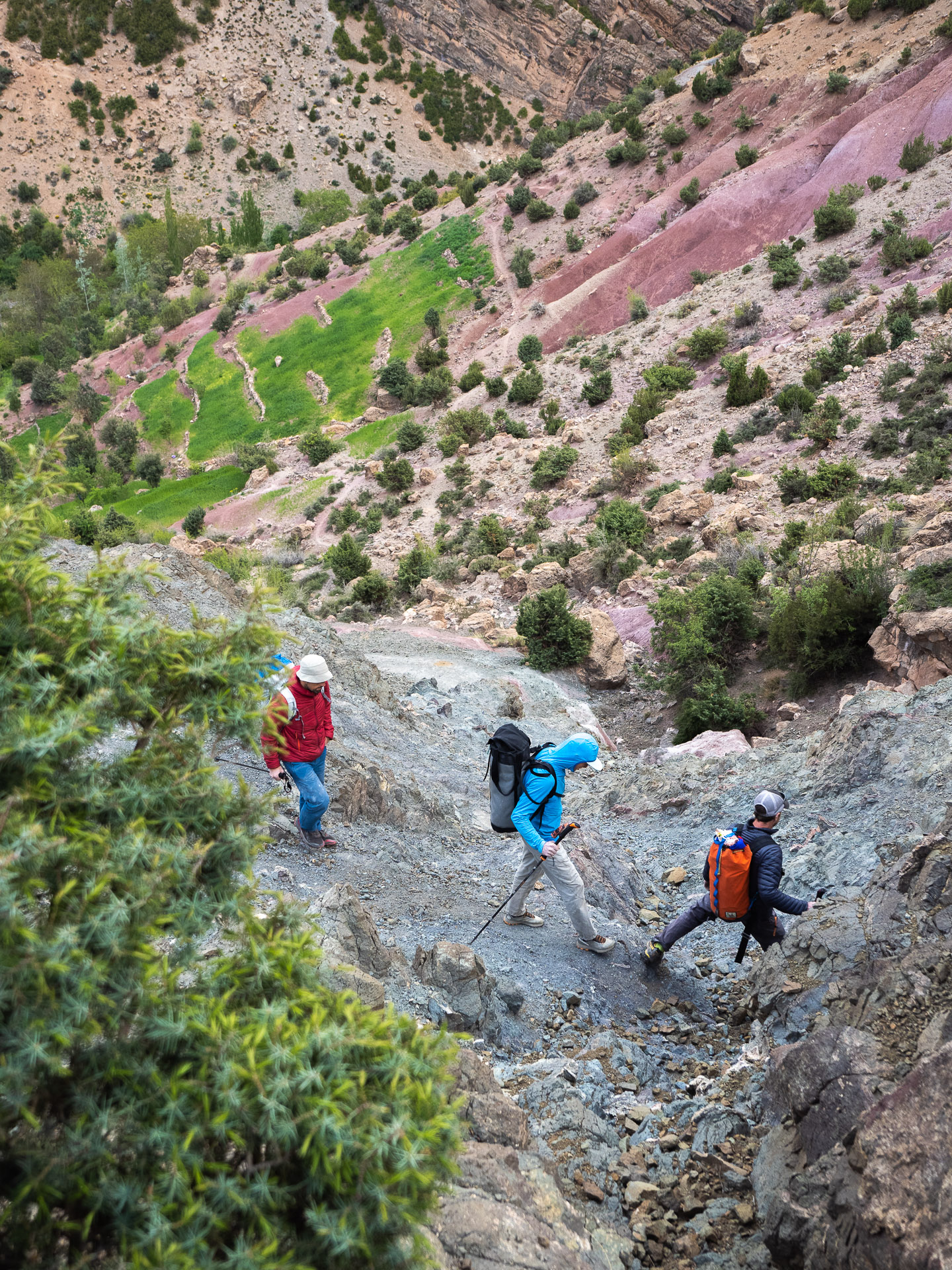
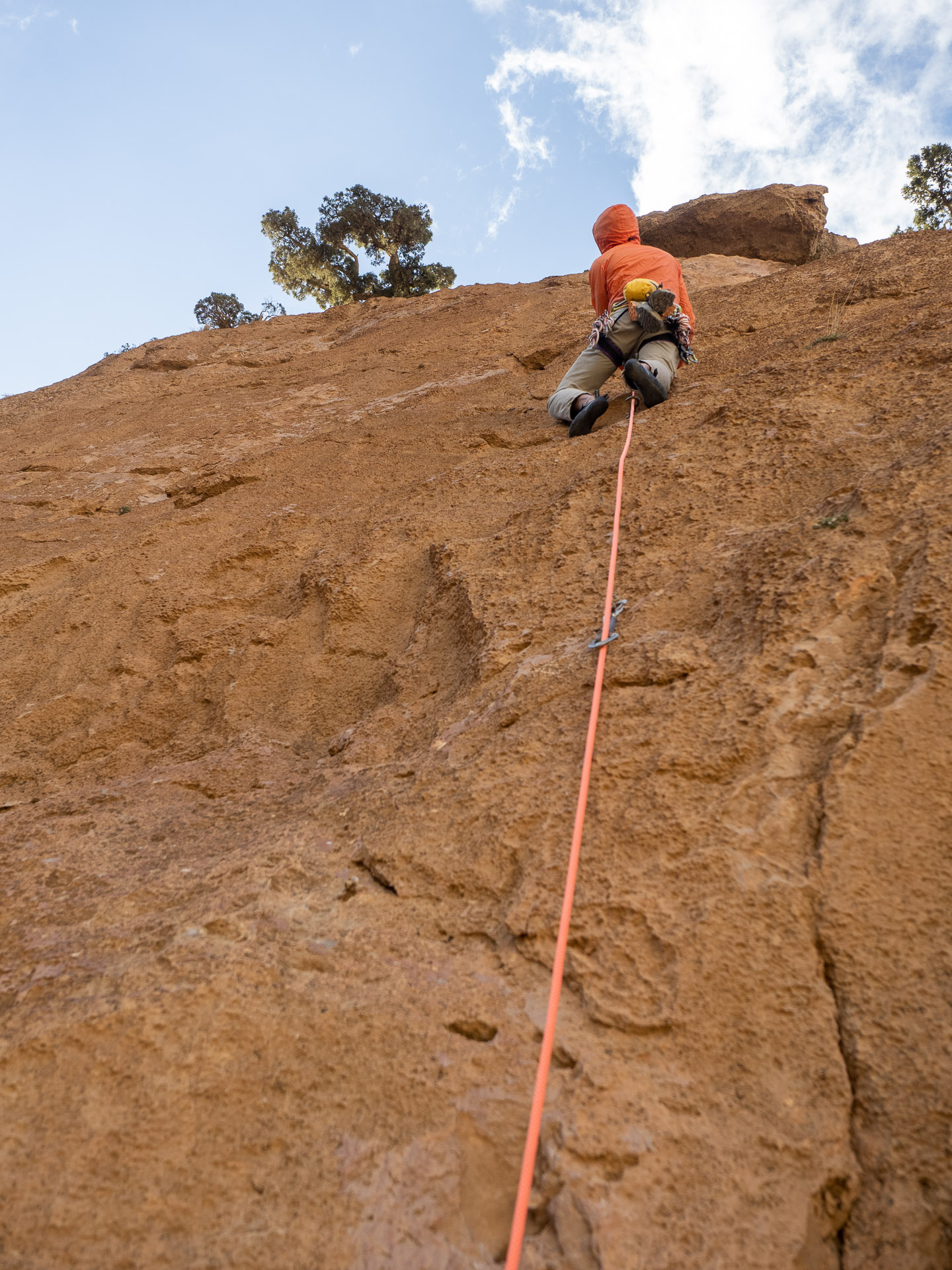
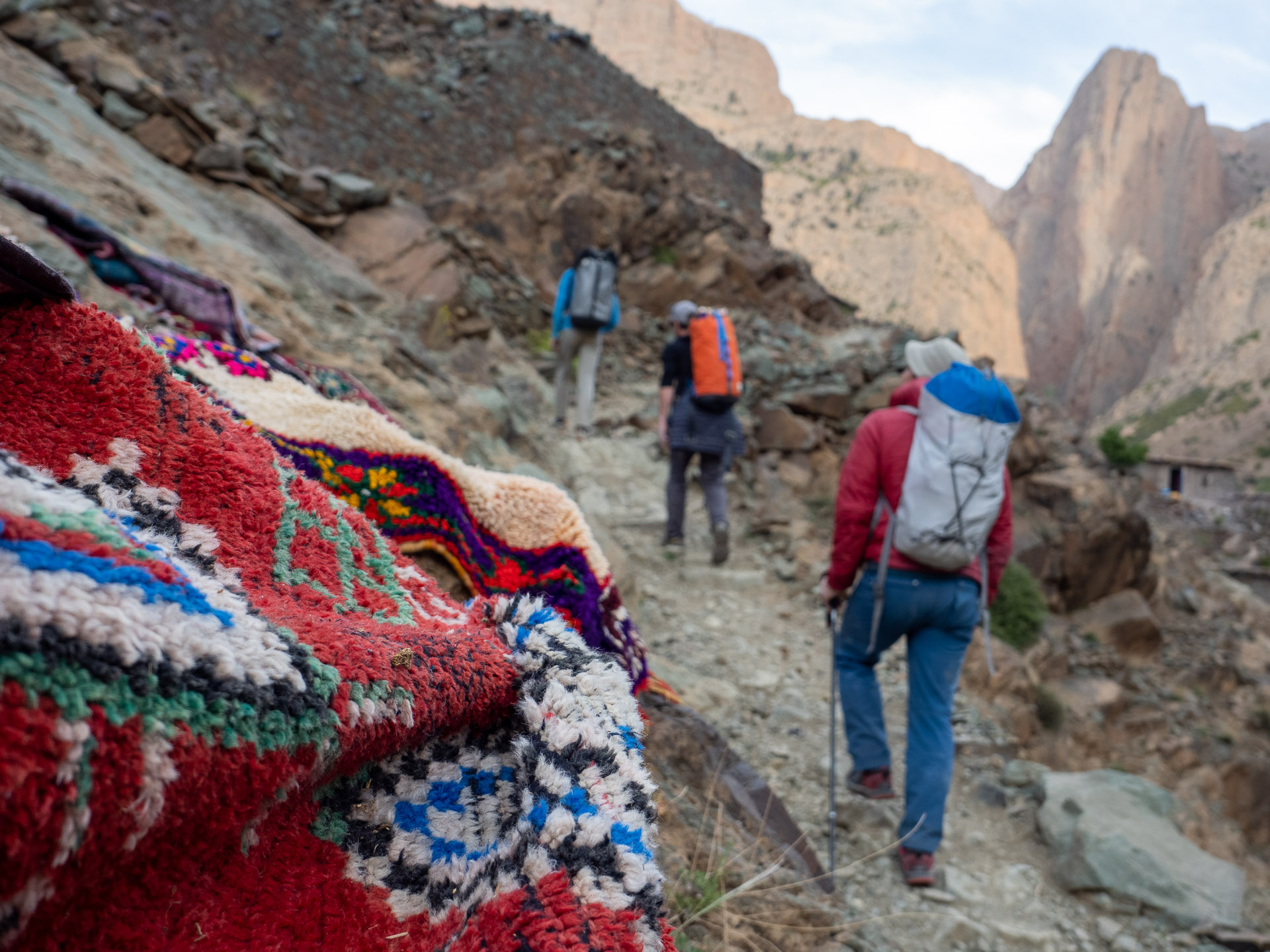
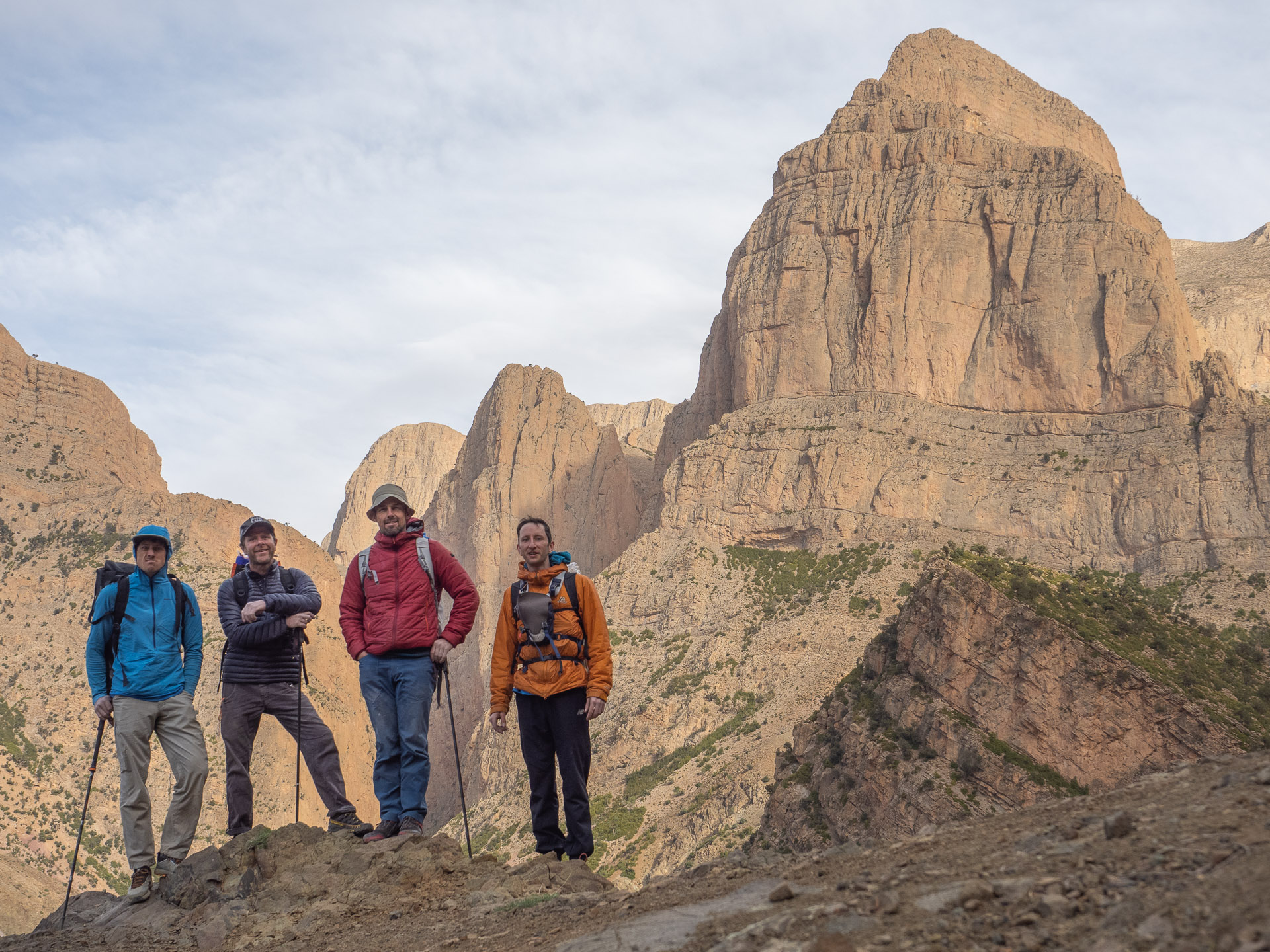
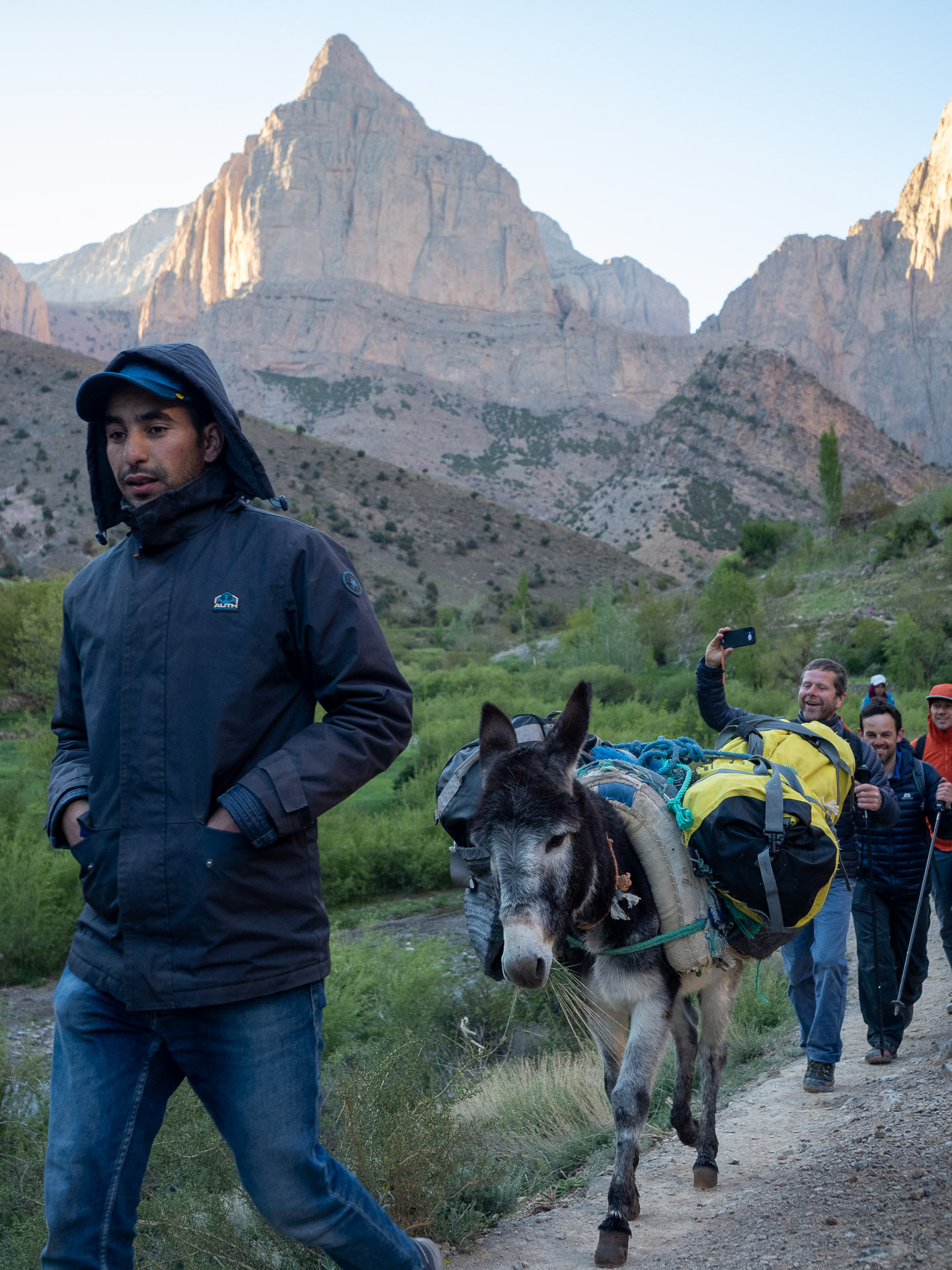
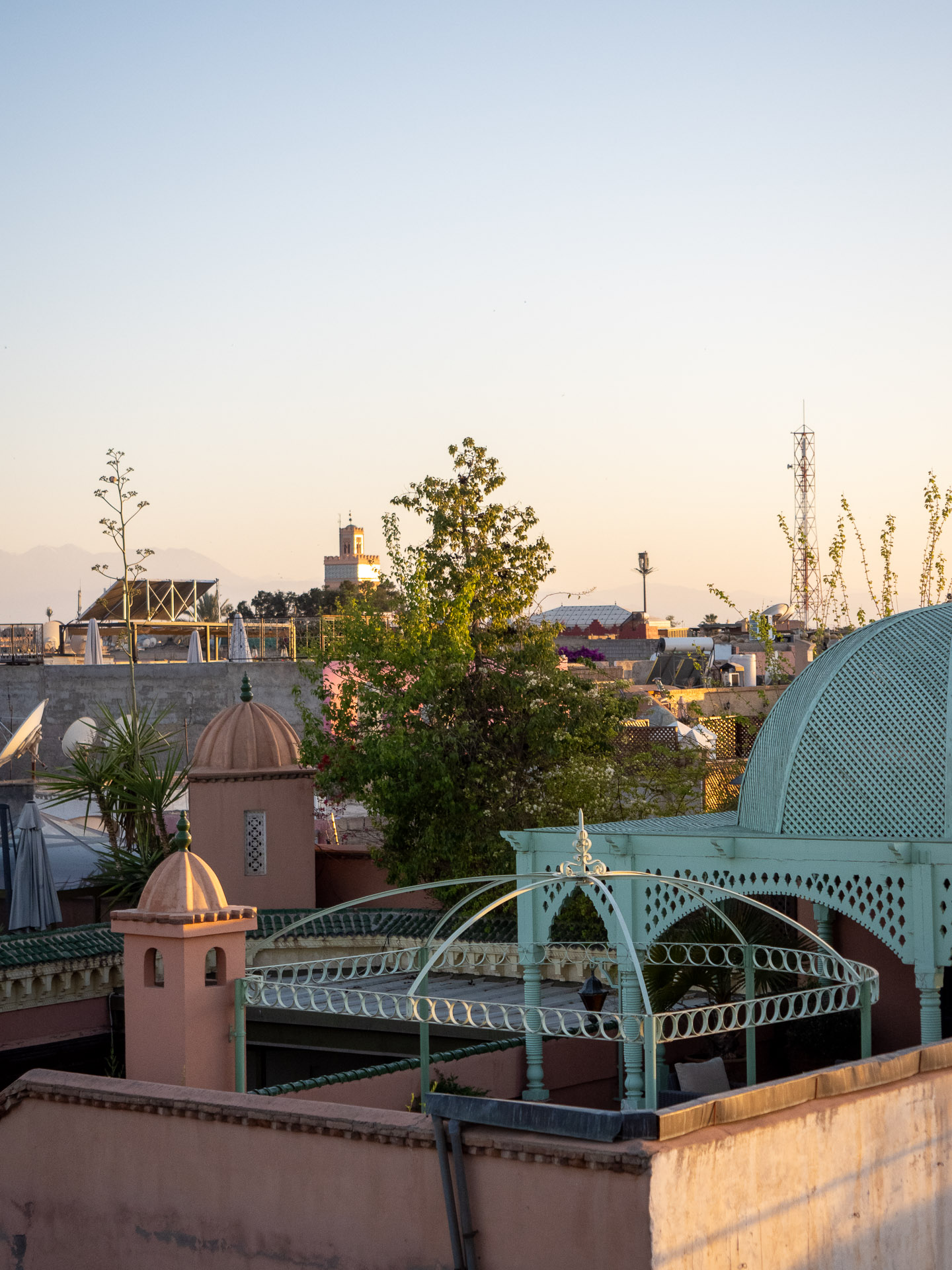
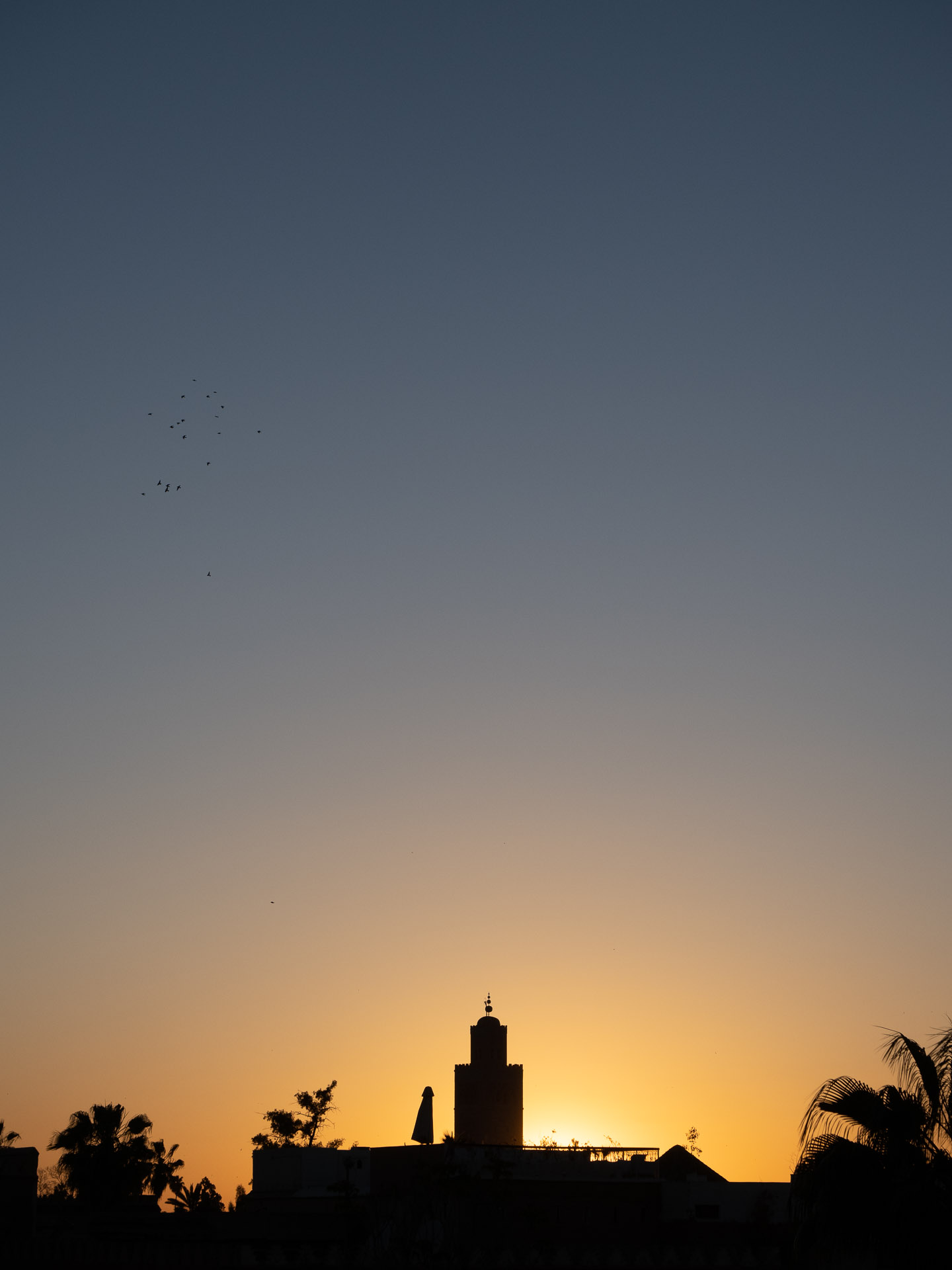

Really enjoyed this Pete thanks! Got me psyched for Morocco!!
Thanks Rach, glad you liked it. Keen to return to Taghia next year!